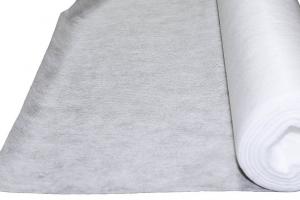Camel thorn is from the moth or legume family. This plant is popularly called tumbleweed, chagerak, dzhantak, yantak, tsegrik. The common camel thorn is the most famous species; it grows in semi-desert and desert zones of the European part of Russia (mainly in the southeast), in the Urals, Siberia, Central Asia Minor, and the Caucasus. Thorn grows along the banks of canals and rivers, in wastelands, gray soils, and sands.
Botanical description
Camel thorn is mainly a thorny subshrub. However, it occurs in nature, although rarely, as a herbaceous perennial plant growing up to 1 m in height. The roots go deep into the ground, the root system of the plant is quite long (up to 10 m), thanks to which the plant receives the required amount of water even in desert conditions. The plant has furrowed, bare green stems, which are highly branched and lined with 1-3 cm spines. The leaves are simple, oblong, lanceolate, entire with subulate stipules, located on petioles at the base of spines and stems. Pink and red flowers of the moth type are located on the spine-peduncles; there can be from 3 to 8 flowers on the spine. The calyx is bell-shaped with five teeth. Since camel thorn is from the legume family, the petals of the corolla are different. The flag has an obovate shape, the boat is blunt, the same size as the flag, the wings are shorter than the boat. The plant has a fruit - beans, which can be either four-seeded or five-seeded with 4 or 5 kidney-shaped seeds, almost square in shape. Flowering occurs in May-August.
Collection and preparation
For medicinal purposes, grass and roots are collected during the flowering period and after. Before drying, the grass must be cut, after which it is laid out under a canopy. You can store the grass for 1 year in bags and cardboard boxes.
Chemical composition
Currently, the chemical composition of camel thorn has not been sufficiently studied. The composition of the herb includes essential oil, saponins, steroids, organic acids, flavonoids, vitamins C, leukoanthocyanins, coumarins, up to 18% tannins, carotene, glycosides, phytoncides, traces of alkaloids, vitamins B and K. In the young grass of camel thorn in contains large amounts of vitamin C.
Persian camel thorn contains a large amount of sugars, which in warm weather appear on the stems and harden in lumps.
Pharmacological properties
Medicines made from camel thorn have an astringent, choleretic, hemostatic, and wound-healing effect. In addition, it has a bactericidal effect on staphylococci and streptococci.
Medical uses of camel thorn
Camel thorn, the use of which in medicine began relatively recently, is used to prevent dysentery, to treat inflammation of the colon, gall bladder, duodenum, stomach ulcers, and gastritis. Sometimes used to treat sore throat, colds, and excessive cough.
Camel thorn is also used externally for treatment of pustular skin diseases, purulent wounds, and for purulent otitis it is instilled into the ears.
Baths from the herb of the plant are used to treat rickets in children, as well as to treat.
Tincture and decoction of the herb is used for treatment. "Manna" - frozen lumps of sugar, is a good antipyretic and diuretic. Such lumps are used for dry cough.
Folk recipes
Root decoction: brew 20 grams of root in a glass of boiling water, put on low heat for 25 minutes, leave for 30 minutes, strain. For dropsy, this decoction is a good diuretic; the recommended dose is 4 tbsp 30 minutes before meals. spoons three times a day.
The same decoction can be taken for purulent otitis media, sore throat, if adults experience urinary retention or if there is sand in the urine. In this case, it is recommended to take 1 table three times a day. spoon.
Infusion of the powder: brew 1 teaspoon of powder in a glass of boiling water, leave for twenty minutes, strain. During feverish heat, the infusion is used as a cooling agent. This infusion is recommended to gargle for pain.
The herb is also used externally in the form of compresses to remove tumors and abscesses. In the form of baths, the herb is used for rheumatism and joint pain: take 60 grams of herb in a bucket of water, steam for about one hour, then strain the infusion. Sore spots need to be steamed for 30-40 minutes. In the form of lotions and baths it is used for eczema, hemorrhoids, and pustular skin diseases.
Application on the farm
This plant in the desert is mainly eaten by camels; due to its thorns, this plant remains inaccessible to other animals. However, if camel thorn is ground into flour, it will become valuable food for animals.
CAMEL TURN (YANTAK, JANTAK, TUMBLINGEED) CAMEL TURN HAS STRONG ANTI-MICROBIAL PROPERTIES, WHICH MAKES ITS USE HEALING FOR COLDS AND SOLISHES, OTITIS AND SKIN DISEASES, CERVICAL EROSION UTERUS. The unique healing properties of camel thorn have been known since ancient times. Avicenna himself created useful medicines from this plant. It was used as an effective wound-healing and anti-inflammatory agent, with its help getting rid of various kinds of skin diseases and inflammations. Camel thorn is also known by other names - yantak, jantak, tumbleweed. In desert areas, the plant fully justified its name by serving as a reliable nutritious and often the only food for camels. The dried above-ground part of the plant was an excellent fuel, and the boiled roots of the plant, in the absence of other food, served as food for people wandering through the desert. Tea made from camel thorn branches relieved dry mouth, quenched thirst, gave strength and avoided gastrointestinal disorders. INTERESTING FACTS One camel thorn plant evaporates 2-2.5 liters of liquid per day. It can be collected by placing a plastic bag over the plant. The collected liquid tastes like tart green tea. CHEMICAL COMPOSITION OF CAMEL Thorn Camel thorn contains a large amount of vitamins, these are B vitamins, vitamins A, C, K. In addition, you can find in it: essential oil, resins, tannins, alkaloids, catechins, dyes, flavonoids, sugars, organic acids, coumarins, rubber. Camel thorn is capable of secreting a sugar-containing liquid, which turns into solid lumps in the dry and hot climate of deserts, which are called “manna” in sacred texts. Manna has many beneficial properties, for example, it has an antipyretic, laxative and diuretic effect. USEFUL PROPERTIES OF CAMEL Thorn Camel thorn grass is an enemy for harmful microorganisms; it has a bactericidal and antimicrobial effect, mercilessly destroying staphylococci, streptococci and dysentery bacillus. Decoctions based on this medicinal plant are used in folk medicine to treat diseases such as hemorrhoids, acute tonsillitis, eczema, purulent otitis media, cervical erosion, and the spread of pustules. Camel thorn decoction is a wonderful remedy for festering wounds and ulcers. Infusions and decoctions of camel thorn have a diuretic, astringent, anti-inflammatory, laxative effect, and stimulate the process of sweating. In addition, such drugs are an effective expectorant. The juice of this medicinal plant is useful for various diseases of the digestive system. It is especially effective for diarrhea and dysentery. Sometimes honey is made from camel thorn. This honey also has a number of medicinal properties, is an excellent means of combating harmful microorganisms, and helps cleanse the body, removing toxins and excess salts from it. Camel thorn honey is odorless, but has a pleasant taste. It can be added to tea - this will help get rid of colds as quickly as possible, in addition, it has a tonic effect on the body. Contraindications There are few contraindications for use. Since the plant has a choleretic and diuretic effect, it should be used with caution by people suffering from urolithiasis and cholelithiasis.
Plants growing in desert and steppe regions, after dying, leave some formations consisting of a dried part. Such plant remains are woven into large balls that roll in the wind and scatter seeds.
Tumbleweeds include plants, most often with branched thin stems and splayed branches. In autumn, the stem of a dried plant breaks off from the root, or, together with the root, is pulled out of the ground by the action of the wind. The stems of several grasses intertwine and roll across the field, collecting various twigs and straws. The end result is a pretty decent lump.
Description
Tumbleweed is a perennial herbaceous plant with a branched stem, taking the shape of a spherical bush, and with a long rhizome. The lower leaves of the plant fade very quickly, the middle leaves are lacent or linearly lacent, with a waxy coating, long-pointed with several veins.
The flowers are quite small, arranged in a spreading panicle, located on thin thread-like pedicels. The calyx of the flower is wide-bell-shaped, no more than 1.5 mm long. The petals of the flower are twice as long as the calyx, white. The plant blooms in summer.
Tumbleweed grows in the European part of Russia, Western Siberia, and Central Asia: in the steppes, on the edges of pine forests, on sandy soils.
Tumbleweed is harvested in the summer, in June - July, during the flowering period. Roots - in the fall, when the plant dies.
Application
Tumbleweed has the following medicinal properties:
- antimicrobial;
- expectorant;
- pain reliever;
- laxative;
- insecticidal;
- emetic.
Recipes
 For bronchitis as an expectorant should be brewed 1 tsp. roots, finely chopped, pour 0.5 l. water. Cook for 5 minutes. Leave for an hour, strain. Use several times a day after meals.
For bronchitis as an expectorant should be brewed 1 tsp. roots, finely chopped, pour 0.5 l. water. Cook for 5 minutes. Leave for an hour, strain. Use several times a day after meals.
For hepatitis, cholecystitis you need 1 tsp of herb with 2 cups of boiling water. Leave for an hour. Strain. Drink 1 tbsp several times a day.
For pain in the liver 0.5 tsp tumble grass roots, pour a glass of very hot water, cook for 30 minutes. Strain. Drink 3 times a day, 1 tbsp.
Restricted use
It must be remembered that you should not take decoctions from the tumbleweed plant without consulting your doctor.
Camel thorn (tumbleweed) - Alhagi pseudalhagi (M.B.) Desv .
Legume family.
Description
A spiny subshrub, less commonly a herbaceous perennial plant of the legume family, up to 1 m in height. Characterized by roots that go deep into the ground, the root system can reach 10 m in length, which helps provide water in desert conditions. The stems are highly branched, bare, grooved, green, covered with spines 1-3 cm long; they are modified axillary shoots. The leaves are oblong, lanceolate, simple, entire with subulate stipules, on petioles, located at the base of the stems and spines. The flowers are red and pink, moth-type, located on spines - pedicels, 3-8 per spine. The calyx is bell-shaped with 5 teeth. The petals of the corolla, like all legumes, are not the same. The flag is obovate, the boat is obtuse, equal in size to the flag, the wings are shorter than the boat. The fruits are four- and five-seeded clearly visible beans with 4-5 seeds. The seeds are kidney-shaped, almost square. Blooms in May-August. There are 5 types of camel thorn in our country.
Blank
Medicinal raw materials are grass and roots collected during and after flowering of the plant. The grass is dried under a canopy, having previously been crushed. Store in cardboard boxes and bags for 1 year.
Chemical composition
The chemical composition of the plant has been little studied. Saponins, essential oil, steroids, flavonoids, organic acids, leukoanthocyanins, coumarins, vitamins C, groups B, K, carotene, glycosides, tannins (up to 18%), traces of alkaloids, phytoncides were found in the grass. The young grass of all five camel thorn species contains large amounts of vitamin C.
Pharmacological properties
Camel thorn preparations have wound-healing, hemostatic, astringent and choleretic effects. They have a bactericidal effect on streptococci and staphylococci.
Application in medicine
Used for the prevention of dysentery, inflammation of the colon and duodenum and gall bladder, gastritis and ulcerative stomach diseases, sometimes prescribed for colds, tonsillitis and excessive cough. Externally used for the treatment of purulent wounds, pustular skin diseases and eczema , instilled into the ears for purulent otitis. For the treatment of hemorrhoids and rickets Children use camel thorn herb baths. Decoction and tincture of the herb are also used in the treatment of cervical erosion.
Medications
Root decoction: brew 20 g of root with 1 cup of boiling water, heat over low heat for 25 minutes, leave for 0.5 hours, strain. Drink 4-5 tbsp. l. 3 times a day 0.5 hours before meals as a diuretic for dropsy. The same decoction, 1 tbsp. l. Take 3 times a day if there is sand in the urine and urinary retention in adults; at sore throat, purulent otitis media (ear inflammation).
Infusion of powder: brew 1 cup boiling water 1 tsp. powder, leave for 20 minutes, strain. Use as a cooling agent during feverish heat. Gargle with infusion of powder for pain.
It is used externally to remove abscesses and tumors in the form of compresses, and in the form of baths for joint pain, rheumatism : 60 g per bucket of water, steam the herb for about an hour, strain and steam for 30-40 minutes on sore spots; in the form of baths, lotions for hemorrhoids, eczema , pustular skin diseases.
Use on the farm
Serves as food for camels, but is inaccessible to other animals due to thorns. Hay, ground into flour, is a valuable feed.
Places of growth
Camel thorn, the most famous species of this plant, is distributed in the desert and semi-desert regions of the south-east of the European part of Russia, throughout the Caucasus, Asia Minor and Central Asia, as well as in Siberia and the Urals. It grows on sands, gray soils, wastelands, along the banks of rivers and canals.
Common camel thorn is a perennial subshrub. Stems and branches are glabrous, grooved, green, branches are much thinner than the main stem, glabrous, less often sparsely hairy, extending upward at an acute angle. The lower spines are strong, short, 1.2 cm long, the rest are thin, long, 2-3 cm long, directed upward. The leaves are oblong, lanceolate or oval, obtuse, equal in length to the spines or slightly shorter. Flowers 3-8 on a spine; corolla red or pink; the sail is longer than the boat, the bob is slightly curved or straight, naked, 4-5 seeds.
Blooms in May-August.
Distributed in the European part of Russia (Lower Volga, Lower Don regions), in the Caucasus, Western Siberia (Upper Tobol region), and in Central Asia.
Grows in uncultivated areas in irrigated areas, sands.
Roots, grass (stems, leaves, flowers), and flowers are used for medicinal purposes.
Alkaloids, vitamin C, coumarins, and tannins were found in the roots. Organic acids, essential oil, rubber, alkaloids, vitamins C, K, group B, carotene, tannins, catechins, and flavonoids were found in the grass. Alkaloids and other nitrogen-containing compounds and flavonoids were found in the branches. The branches and thorns contain vitamin C, coumarins, and tannins. The leaves contain coumarins, tannins, flavonoids, rutin. Essential oil was found in the flowers, tannins were found in the fruits.
A decoction of the herb has bacteriostatic, hemostatic, anti-inflammatory, choleretic, astringent, diuretic and antipyretic effects. A decoction and infusion of the roots is used as a hemostatic, for hemorrhoids and dysentery, choleretic, diuretic, laxative, as well as for liver diseases, stomach and duodenal ulcers; externally - as a wound healing agent. A decoction of the herb is used as a choleretic, astringent for colitis, gastritis, gastric ulcers, and reduces moisture loss in the body. The infusion is used externally (baths) - for hemorrhoids and for washing wounds. A decoction and infusion of the herb is also used for dysentery, diseases of the nasopharynx, tonsillitis, purulent otitis, for the treatment of cervical erosion and endocervicitis, and for eczema.
The plant secretes a sugary substance known as manna (contains di- and trisaccharides). Manna is a laxative, diuretic and antipyretic, a sugar substitute. .
Camel thorn flowers in Central Asia and Azerbaijan are used to prepare tea drinks that quench thirst and sharply reduce sweating.
1. 2 teaspoons of crushed camel thorn roots per 1 glass of water, boil for 6-7 minutes, leave for 30 minutes, cool. Take the entire dose in the morning on an empty stomach as a laxative.
2. 3 tablespoons of crushed camel thorn roots per 0.5 liters of water, boil over low heat for 5-6 minutes, leave for 1.5-2 hours, strain. Take 1/3-1/2 cup 30-40 minutes before meals for cholecystitis, hepatitis, gastric and duodenal ulcers, hemorrhoids, gastritis, colitis. The decoction is used externally in the form of washes, lotions, as a wound-healing agent.
3. 3 tablespoons of crushed camel thorn grass per 0.5 liters of water, boil over low heat for 3-4 minutes, leave for 1 hour, strain. Take 1/3-1/2 cup for cholecystitis, hepatitis, gastric and duodenal ulcers, dysentery, sore throat, purulent otitis, and nasopharyngeal diseases.
4. 4 tablespoons of chopped herbs per 0.5 liters of boiling water, leave for 1-2 hours, strain. Use externally (baths) for hemorrhoids, purulent otitis, eczema, for washing wounds, for douching in the treatment of cervical erosions and
Camel thorn is a subshrub with a spiny and branched stem. This plant has several more widely known names - tumbleweed, jantak. Camel thorn has a small height (up to 1 m), but a very powerful and long root system. It allows you to survive in the driest places - where other vegetation dies. Roots 3-45 m long, with deep horizontal branches, help tumbleweeds reach groundwater. The stems of the plant have green, grooved, bare spines 1-3 cm long. Its leaves are entire, oblong, lanceolate, simple. The flowers are red or pink, their calyx is bell-shaped with 5 teeth. Camel thorn has fruits in the form of naked beans with almost square, kidney-shaped seeds.
Chemical composition
The herb of this plant contains flavonoids, glycosides, tannins and dyes, sugars, saponins, leukoanthocyanins, vitamins B, K, C, steroids, coumarins, carotene, essential oil, traces of alkaloids, resins, ursolic acid.
pharmachologic effect
Most people are familiar with what a camel thorn looks like; photos of it can often be found in images of the desert and steppe; this is one of their symbols. But not everyone knows that this is a quite useful plant, especially in temperate latitudes. Medicines based on it have an emollient, diaphoretic, anti-inflammatory, wound-healing, hemostatic, urinary and choleretic effect on the human body. In addition, jantak can serve as a basis for the production of bactericidal agents against dysentery bacillus, streptococci and staphylococci.

ethnoscience
Healers use camel thorn as a laxative for gastrointestinal diseases, as a diuretic for dropsy, urine retention and the presence of sand in it, purulent otitis, and sore throat. A decoction of this plant is used to treat cervical erosion, colds, and coughs. It is prepared by steaming 2 tbsp. spoons of crushed root in 250 ml of 100-degree hot water, followed by 25 minutes of boiling, half an hour of exposure and filtration. Externally, compresses from it are used to remove tumors and abscesses. Camel thorn has also found use in the treatment of rheumatism, eczema, hemorrhoids, and pustular skin ailments. An infusion of plant powder is used for gargling and cooling during feverish heat. Currently, preparations based on tumbleweeds are used only in folk medicine; this is most likely due to the fact that there are only five medicinal species of this plant.
Places of distribution
This subshrub can be found in semi- and completely deserted areas in Asia Minor and Central Asia, the North Caucasus, the European part of the Russian Federation, the Urals and Siberia. It grows on gray soils, sands, wastelands, along the banks of canals and rivers. Tumbleweed can be cultivated; it is propagated by seeds or cuttings, planted in sunny, sheltered from the wind, very hot places, with well-drained sandy and dry soil.

Storage and procurement
The roots, fruits and herbs of this plant are used for medicinal purposes. They are harvested during or immediately after flowering. In addition, plant secretions are used - a brownish-yellow sweet liquid - “manna”. It is collected in the morning after it hardens at night. The grass is crushed and dried in a thin layer under a canopy.








